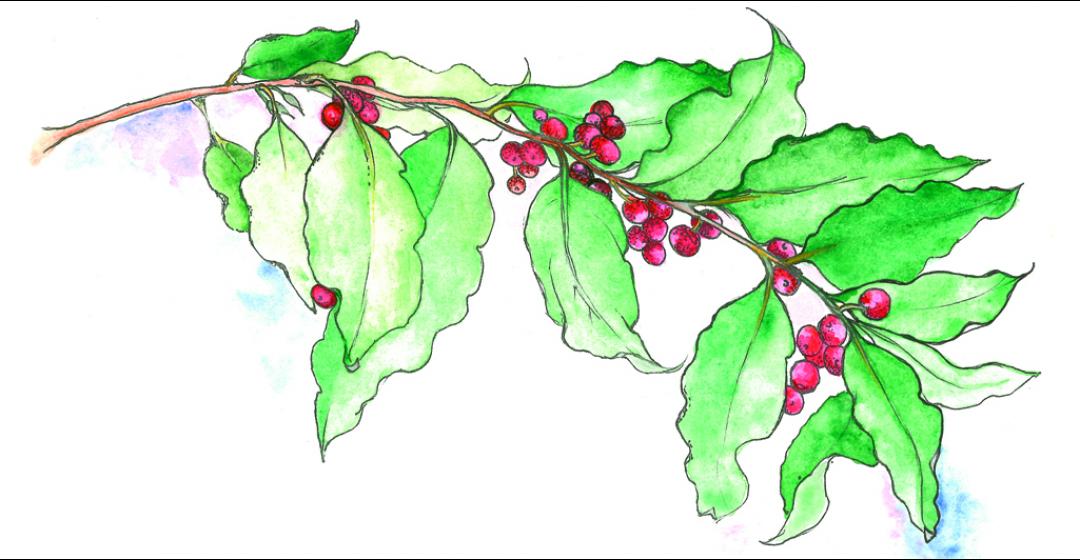What type of berry is safe to eat but not to plant? The answer isn’t so much a riddle as a home cook’s pro tip and a gardener’s cautionary tale. Autumn olives, small red berries with silver flecks, are abundant on the Island – too abundant, in fact. The native Asian shrubs and trees, introduced to the U.S. in the 1800s to line roadways and prevent erosion, today pose a significant threat to native foliage. In 2006 the state of Massachusetts declared it unlawful for autumn olives to be sold or replanted.
They aren’t true olives, but they are good to eat, and good for you too. A single shrub can produce up to a gallon of berries, each packed with lycopene, antioxidant vitamins A, C, and E, flavonoids, and essential fatty acids. Another bonus: every berry you take is one the birds can’t distribute elsewhere to further the invasion.
Where to look: Along roadways, forest edges, open fields, driveways – anywhere, really. Where you find one plant, you’ll likely find many others. Leaves are bright green on top with silvery, scaly undersides. In September and October the silver berries ripen to a speckled bright red hue.
How to use: No need to mess with success; the tart fruit can be eaten off the vine, added to salads, or served alongside a cheese plate. It can also be boiled down to make jam, sauce, or fruit leather, or soaked in alcohol to make a cordial.
“On the motionless branches of some trees, autumn berries hung like clusters of coral beads, as in those fabled orchards where the fruits were jewels.”
– Charles Dickens, The Life and Adventures of Martin Chuzzlewit





